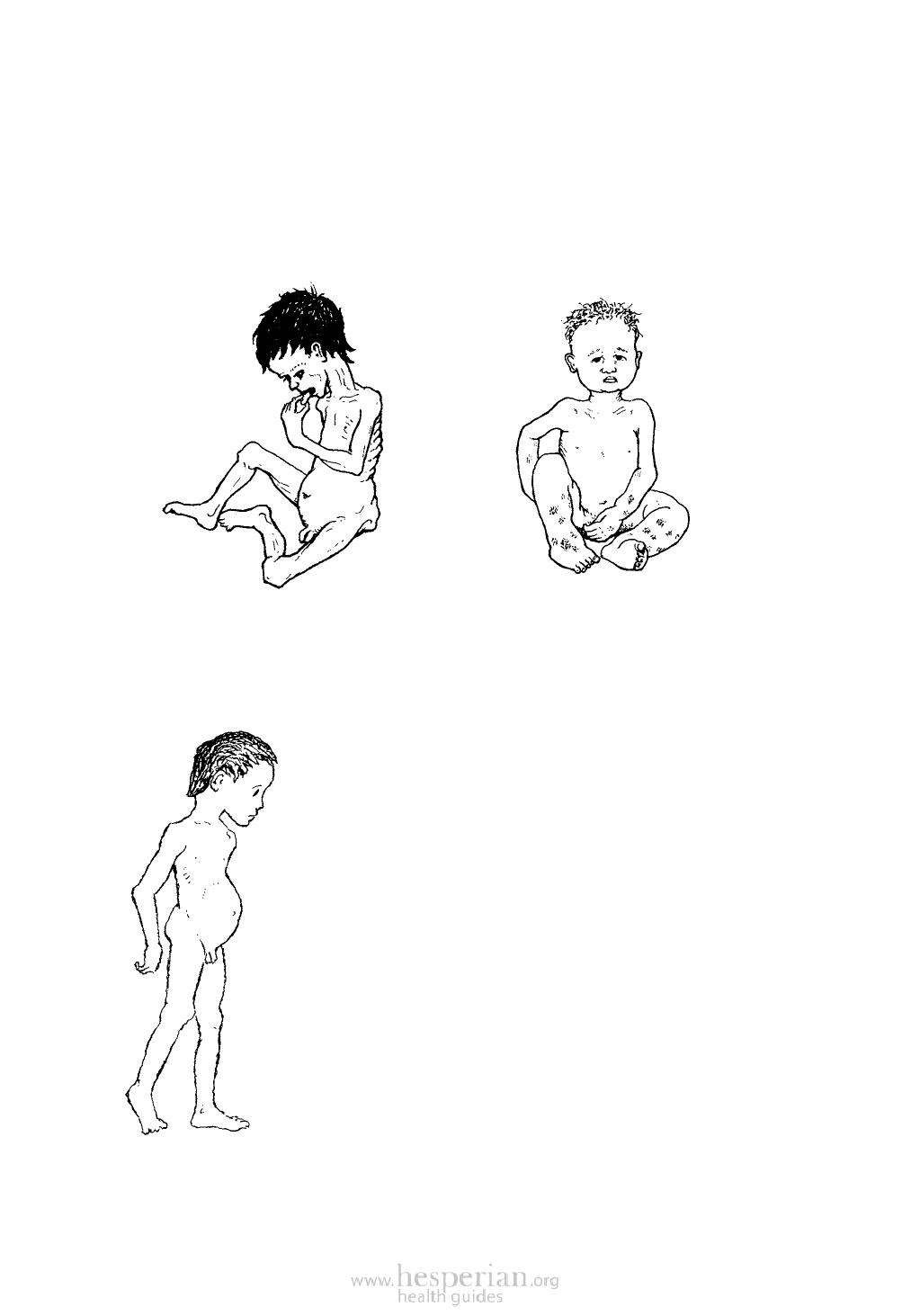
25-8
Finding out about the nutrition of children in a community
We can usually recognize children who are severely malnourished without taking
measurements. Here are two examples from Where There Is No Doctor, pages 112
and 113:
DRY MALNUTRITION
OR MARASMUS
WET MALNUTRITION
OR KWASHIORKOR
face of an
old man
always hungry
potbelly
very
underweight
very thin
swollen
‘moon’ face
miserable
stops
growing
sores
and
peeling
skin
swollen hands
and feet
color loss
in hair
and skin
thin upper
arms
wasted
muscles
(but he
may have
some fat)
THIS CHILD IS JUST SKIN AND BONES.
THIS CHILD IS SKIN, BONES, AND WATER.
But for every child who is seriously malnourished like the two above, there
are usually many others who are less severely malnourished, like this:
thin arms
and legs
small
underweight
big belly
This more common form of malnutrition is
not always obvious. The child simply does not
grow or gain weight as fast as a well-nourished
child. Although he may appear rather small and
thin, he usually does not look sick. However,
because he is poorly nourished, he may lack
the strength (resistance) to fight infections.
So he tends to get sick more frequently than a
well-nourished child.
Children with this form of malnutrition suffer
from more diarrhea and more colds. Their
colds usually last longer and are more likely to
turn into pneumonia. Measles, tuberculosis,
and many other infectious diseases are far
more dangerous for these malnourished
children. More of them die.
It is important to find children like this and make sure they get the special
care and food they need before they become seriously ill, Because it is not
always obvious which children are growing well and which are not, some form of
measurement is often helpful.